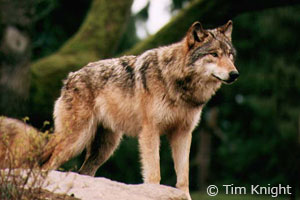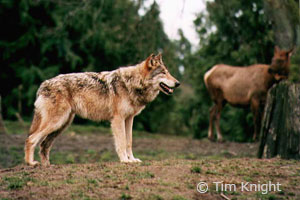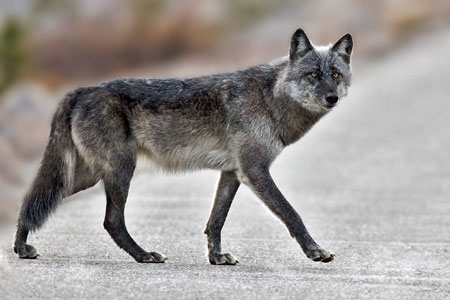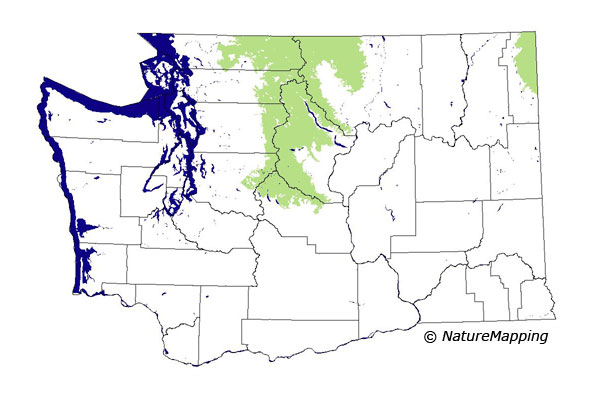
NatureMapping Animal Facts
Gray Wolf
|
Gray Wolf (Canis lupus)
Weight: Height: 26 to 32 inches
Length: 
Gray wolves are members of the dog family (canids) which includes wolves, jackals, coyotes, dogs, and foxes.
Range/Habitat: The gray wolf used to range throughout the U. S. Due to its predatory nature, the gray wolf was seen as a threat to cattle, so by the 1930s many wolves were killed as part of a government extermination program aimed at protecting livestock. 
Confirmed wolf sighting in Washington Click the range map to learn more about the distribution of Gray wolves in Washington. Diet: Gray wolves are carnivorous -- they primarily eat meat. Wolves often hunt in packs for large prey such as deer, moose, sheep, goats, caribou, elk, bison, and muskox. Wolves also will prey on rodents, beavers, fish, and birds. As predators, gray wolves help to maintain a balance in the food web. The loss of wolves from ecosystems have lead to the overpopulation of white-tailed deer and other large mammals. 
Behavior: Gray wolves are territorial and live in packs lead by the alpha pair. A pack of 6 to 8 wolves includes some of the alpha pair's offspring and may include some unrelated wolves. A pack's territory can be as large as 13,000 square km. Howling helps advertise who "owns" a particular piece of territory. Gray wolves communicate with each other through howling, body language and scent. Howling is used to assemble the pack, communicate with other packs, and assert territorial boundaries. At night, howls can be heard several miles away. Wolves use their facial expression, body posture and tail position to indicate their emotion and status in the pack. A pack marks its territory with urine and feces. Reproduction: Gray wolves mate between late January and March. Once the female chooses a partner, the animals may remain paired for a number of years. The gestation period is from 60 to 63 days. Litter size ranges from 4-6 pups. They usually breed once each year. Gray wolves can hybridize with domestic dogs and occasionally with coyotes. Lifespan/Longevity: Gray wolves have been known to live a maximum of thirteen years in the wild, though the average lifespan is about 5 to 9 years. They can live 14-15 years in captivity.
Did you know?
 Wolf in Jasper National Park, Alberta, Canada (courtesy of Natures Pics) Animal silhouettes available to purchase »
More information:
Photo Credits: Tim Knight (top), Natures Pics (bottom) |
